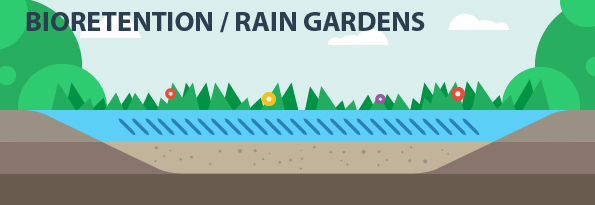Sligo Park Hills Green Neighborhood

Parts of the Chesapeake Bay watershed contain a high percentage of impervious cover – paved or other hard surfaces such as roofs and roadways that prevent rain water from being absorbed into the ground. Instead, water runs along these surfaces, collecting trash and substances such as motor oil, lawn fertilizers, and pesticides. This polluted stormwater flows into streams and rivers, where it threatens aquatic ecosystems and public health.
Effective stormwater management, on the other hand, creates safe paths for polluted runoff to be captured and filtered through the ground before it reaches waterways. This helps keep the environment clean and our communities healthy!

Project location: Silver Spring, MD
Problem: Sligo Park Hills, a neighborhood in Silver Spring, was experiencing severe flooding and erosion during rain events, with portions of speed bumps breaking away and washing down the street. Road debris, silt, and pollutants were washing into Sligo Creek, which feeds into the Anacostia River.
Solution: The neighborhood’s streets were scheduled to be repaired via conventional methods – a central drain pipe installed under the road. Following pressure from community residents to forge a more environmentally-friendly solution, one that mitigates stormwater flows rather than simply draining water to a buried pipe – the Maryland Department of Environmental Protection and the MD Department of Transportation worked with the community to design a new plan. The result was the construction of a large bioretention area consisting of bioswales, tree boxes and permeable pavement pads. The system is able to absorb the first inch of rainfall during a storm event, reducing pressure on the storm drain conveyance system.
Maintenance needs: In the first year, some plant replacement in bioswales. Following the first year, annual weeding and vacuuming silt from bioswales and parking pads
Funding sources: Montgomery County stormwater fees; hundreds of volunteer hours
More information: http://www.montgomerycountymd.gov/water/rainscapes/sligo-park-hills.html

